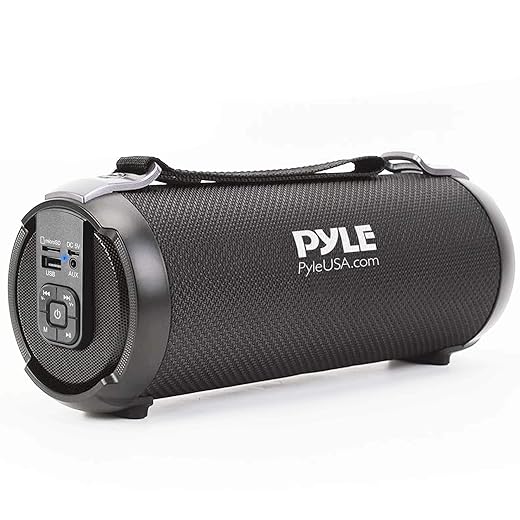








Understanding the Evolution of Bluetooth Speaker Connectivity Protocols
Bluetooth speakers have revolutionized the way we listen to music, turning almost any space into a mini-concert hall. But have you ever paused to consider the technology that makes this possible? In this article, we'll dive into the evolution of Bluetooth speaker connectivity protocols, exploring how they've transformed from simple audio transmitters to sophisticated devices that can stream high-quality sound wirelessly.
The Birth of Bluetooth Technology
Bluetooth technology made its debut in 1994, initially developed by Ericsson as a way to create short-range wireless connections between devices. Imagine a world where wires no longer tangled at your feet! However, it wasn't until the late 1990s that Bluetooth began to gain traction, paving the way for innovations that would ultimately lead to the Bluetooth speakers we know and love today.
The first version, Bluetooth 1.0, was primarily focused on data. While it allowed for basic audio transmission, the quality was often mediocre at best. Think of it as a toddler trying to walk—exciting but a bit clumsy. As we moved into the early 2000s, the technology matured, and the introduction of Bluetooth 2.0 brought Enhanced Data Rate (EDR), which allowed for faster transmission speeds and better audio quality.
The Game Changer: Bluetooth 4.0 and the Rise of A2DP
Fast forward to 2010, when Bluetooth 4.0 was introduced. This version was a game changer, bringing the Bluetooth Low Energy (BLE) protocol into the mix. BLE enabled devices to communicate while consuming less power, which was vital for the longevity of portable devices like speakers.
Moreover, the Advanced Audio Distribution Profile (A2DP) became widely adopted in this era. A2DP allowed for high-quality stereo audio streaming, transforming the audio experience. Imagine upgrading from a black-and-white TV to a vibrant HD screen—it was that dramatic! This evolution allowed manufacturers to produce Bluetooth speakers that provided excellent sound quality, leading to the surge in popularity we see today.
The Leap to Bluetooth 5.0 and Beyond
The introduction of Bluetooth 5.0 in 2016 marked another significant milestone. This version not only doubled the range of previous versions but also quadrupled the data transfer speed. Picture this: you could have your speaker across the room, and it would still maintain a stable connection without a hitch. This advancement enabled richer soundscapes and more complex audio formats, including lossless audio streaming.
Additionally, Bluetooth 5.0 introduced the concept of “broadcasting,” which allowed a single audio source to stream to multiple speakers simultaneously. It's like having a DJ at a party, where everyone gets to enjoy the same beats, regardless of their location. This feature has opened doors to new possibilities for home audio setups and outdoor gatherings, allowing for synchronized sound that enhances the listening experience.
The Future: Bluetooth 5.1 and Beyond
As of late 2021, Bluetooth 5.1 has begun to roll out, focusing on improving location services and enhancing audio capabilities even further. While it hasn't drastically changed the landscape of audio streaming, it lays the groundwork for future innovations.
Future versions are expected to offer even more enhancements, including greater bandwidth and improved codec support, which would allow for even higher quality audio streaming. So, what lies ahead? Perhaps a day where your Bluetooth speaker can instantly adapt to the acoustics of any room, providing a personalized listening experience every time you hit play.
Conclusion
The evolution of Bluetooth speaker connectivity protocols is a fascinating journey that mirrors the rapid advancement of technology itself. From its humble beginnings to the sophisticated, high-quality audio devices we have today, Bluetooth technology has changed the way we experience sound. As we look to the future, it's clear that the possibilities for Bluetooth speakers are endless. Next time you connect your device, take a moment to appreciate the intricate technology working behind the scenes—after all, it's not just music; it's a symphony of engineering!
FAQs
1. What are the main differences between Bluetooth 4.0 and Bluetooth 5.0?
Bluetooth 5.0 offers a greater range, faster data transfer rates, and the ability to connect multiple devices simultaneously compared to Bluetooth 4.0, which has limited range and speed.
2. How does A2DP improve audio quality in Bluetooth speakers?
A2DP allows for high-fidelity audio streaming, enabling Bluetooth speakers to deliver stereo sound with better clarity and depth, making your listening experience much more enjoyable.
3. Are future Bluetooth versions backward compatible?
Yes, newer Bluetooth versions are generally designed to be backward compatible, meaning they can connect to devices using older Bluetooth technology, although some features may be limited.
